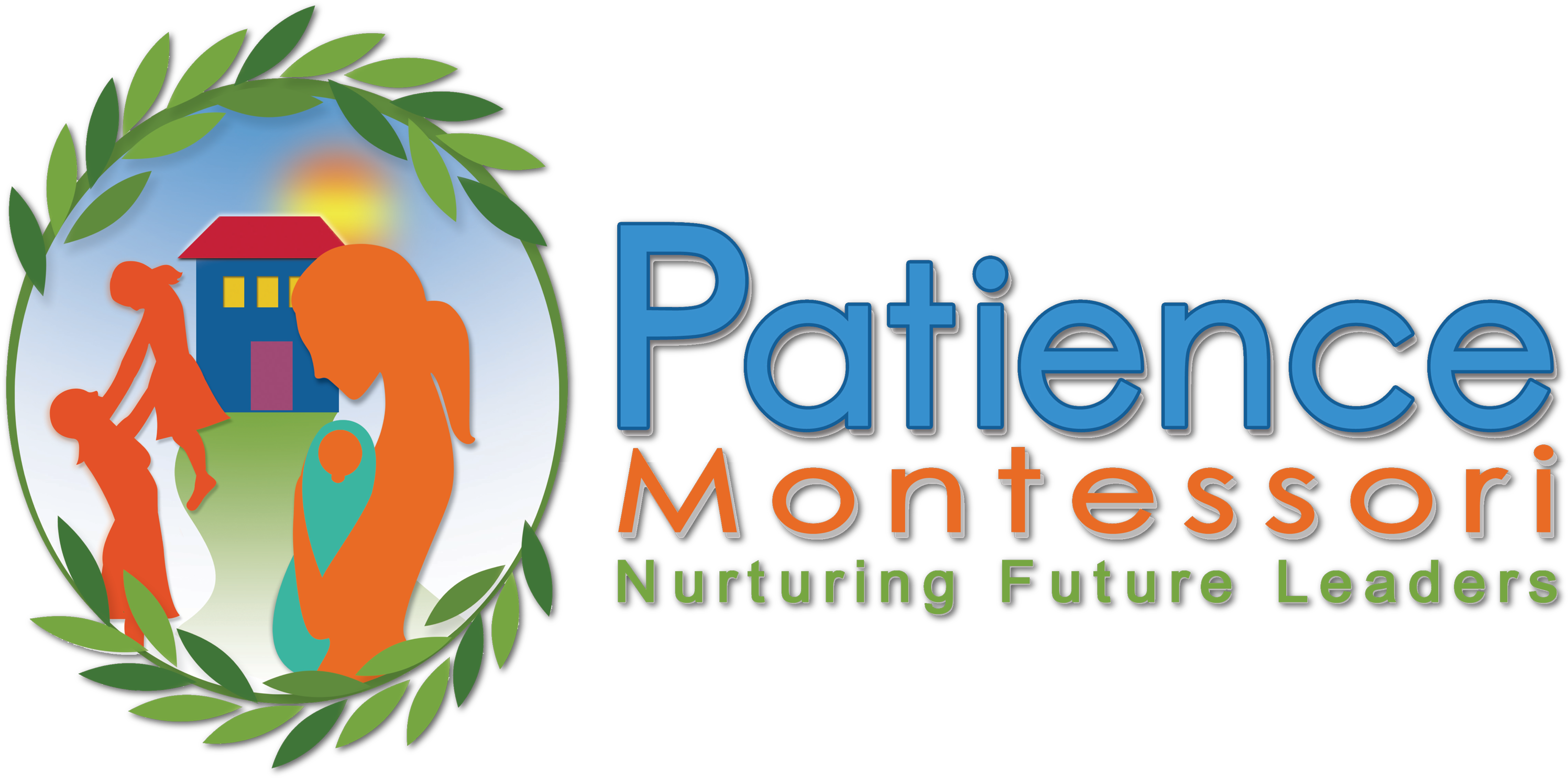Montessori Curriculum
Patience Montessori School is committed to the Montessori approach of education; providing freedom within a prepared environment, stressing individualized academic learning and development for the whole child. The Montessori method of education develops the child’s five senses through manipulative materials in the classroom.
Each classroom is equipped with classic Montessori materials that provide hands-on education. These materials are arranged in a progression of graduating difficulty, allowing the child to progress at his/her own pace. A Montessori curriculum is more than reading, writing, and math - life skills and coordination are also incorporated into our teaching.
What Happens in a Classroom?
Patience Montessori School is committed to the Montessori approach of education; providing freedom within a prepared environment, stressing individualized academic learning and development for the whole child. The Montessori method of education develops the child’s five senses through manipulative materials in the classroom.
Each classroom is equipped with classic Montessori materials that provide hands-on education. These materials are arranged in a progression of graduating difficulty, allowing the child to progress at his/her own pace. A Montessori curriculum is more than reading, writing, and math. Daily living skills and coordination are also taught.
The Montessori Method
Montessori methods are guided by the principle of “sensitive periods” when the child is developmentally ready to learn. Montessori programs take into account the fact that every child develops at his or her own rate. New tasks are introduced at the right moment of “readiness”; only then will the information have true value. The teachers create this motivating, age-appropriate environment through ongoing evaluation of each student’s current stage of development. Frustration is thus kept to a minimum and learning flourishes.
This calculated teaching method allows children to form a habit of finding success one step at a time, building a firm foundation for continual enthusiasm and a lifelong quest for knowledge.
Freedom
For a Montessori child, freedom abounds. Yet, there are certain defined limits and responsibilities for one's actions. Limited freedom with responsibility is the mode of operation at Patience Montessori School. Children respond positively to moving freely from one learning area to another, choosing and prioritizing their own activities. This mode of learning teaches early decision-making by granting responsibility to the young child.
When given freedom, children quickly grasp respect for others, their property, and the concept of responsible freedom. Materials are borrowed as needed, and then returned to their proper spot in good condition for the next user. Our free world operates on the same basis, so why not teach these skills from the start?


Child-sized Environment
Each Montessori classroom is a “child-sized environment” where all learning tools are placed within easy reach. The scaled down surroundings are arranged in an orderly fashion. Materials and exercises are carefully selected to promote independence. Activities follow a general pattern of familiar consistency. Spontaneous, everyday events of life are also considered worthy subject matter, ranging from the change of seasons, to taking care of a new classroom pet, or the birth of a baby brother/sister. The outdoors are a natural extension of the classroom, and our program emphasizes outdoor activities. The study of plants, insects, and other natural subjects are translated into actual experiences where exploration is allowed.

We include plenty of outdoor activities in our curriculum.
Teachers
Each classroom has a trained Montessori teacher and an Assistant to maintain the full curriculum of activities as well as positive social interactions. At Patience Montessori School the young child enjoys the repetition of practical life exercises such as pouring, polishing, and buttoning, which develop coordination and physical independence. Attractively presented sensorial materials stimulate the developing senses; sight, sound, touch, and smell are all at work for the child. Rods, cubes, and geometric solids allow the child to discover mathematical relationships through manipulation. Language, math, science, geography, art, and music are offered through concrete experiences in which the child, not the guide, supplies the energy. In the mixed-age group, the older child has the opportunity to teach and assist younger children, which creates a cohesive and caring group.
Have more questions?
Check out our age-specific programs below!
 (303)-449-5214
(303)-449-5214